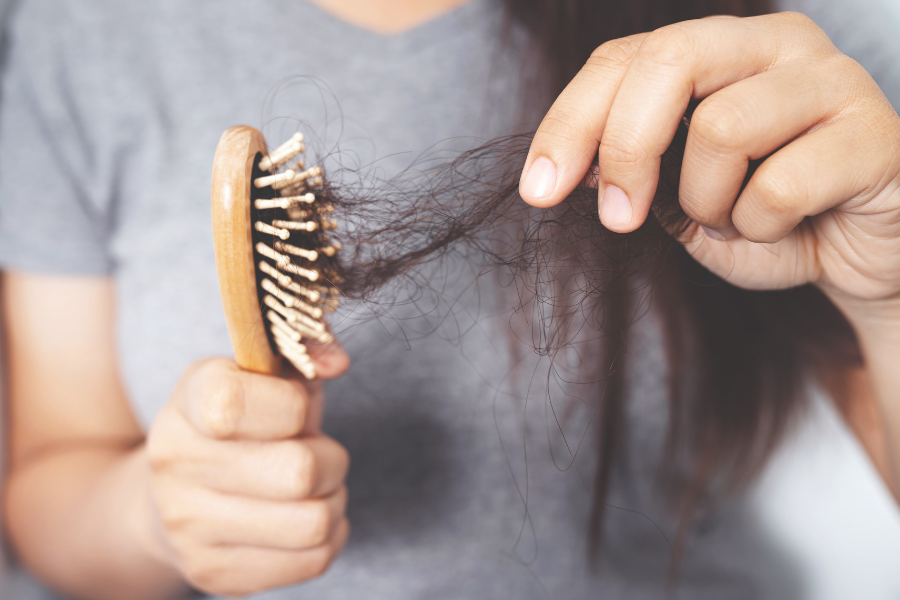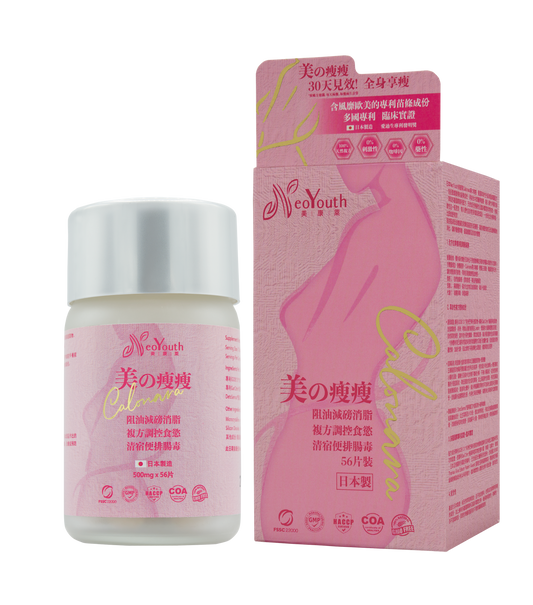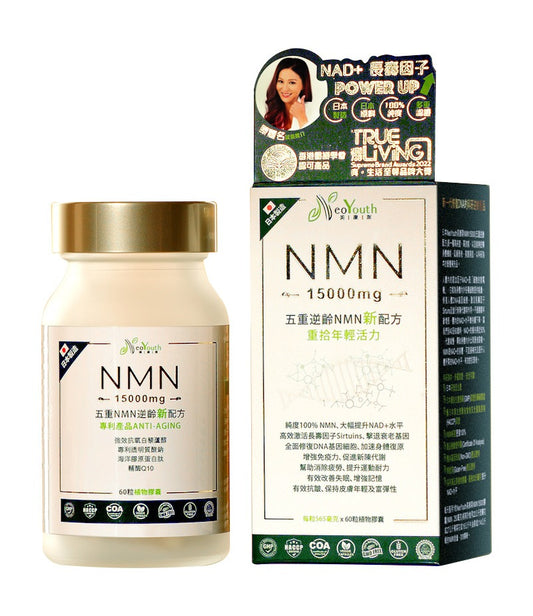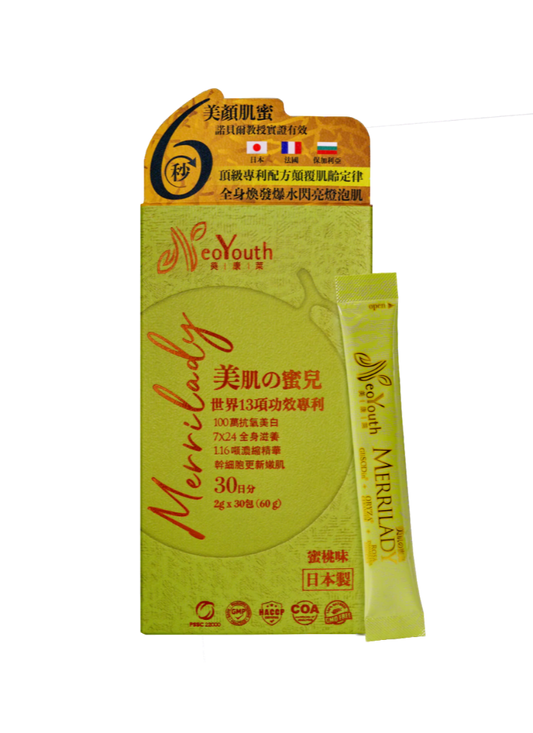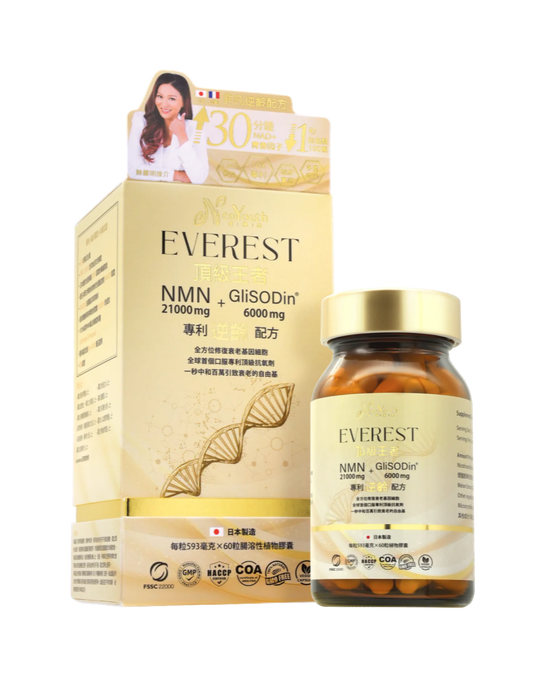The fast pace of daily life, heavy work pressure, and unbalanced diets all contribute to making hair flipping a common problem. Have you ever noticed a significant increase in the number of hairs on your pillow or floor when washing, blow-drying, or waking up? Or do you feel your hair is thinning, or even your hairline is receding? Faced with these concerns, many people ask, " What should I eat to combat hair flipping ?" And how should we address this issue?
NeoYouth will delve into various questions about hair loss, breaking down the causes , types , and initial symptoms of hair loss, and sharing how to improve hair loss from the root by adjusting lifestyle habits and diet, and regain thick, shiny hair.
How to identify the early signs of hair loss? A comprehensive guide to self-testing methods.
Many people only notice significant hair loss in the middle to late stages. If it can be detected in the early stages of hair loss , there is a greater chance of improving hair condition through diet, lifestyle, and hair care. Below are common indicators of early hair loss and simple self-testing methods:
Hairline changes
Observe whether the hairline at the temples and forehead shows a "receding" trend, especially if it recedes in an M-shape or U-shape, which is a common early characteristic of male pattern baldness. Women's hairlines are usually thinning overall and less likely to recede significantly.
Hair volume decreases and hair strands become finer
If you notice a significant increase in hair loss when washing your hair, after waking up, or while combing your hair, exceeding 100 strands per day, or if your hair feels "thinner ," "softer," or "finer," and is difficult to style, it may be a sign that your hair follicles are starting to shrink.
The top of the head and the parting line widen
In the early stages of female hair loss , the hairline at the top of the head gradually widens, and the scalp becomes visible from above. It is recommended to take photos regularly for comparison and to observe the changes.
Sensitive or inflamed scalp
A healthy scalp is the foundation of voluminous hair. If your scalp feels tight, itchy, has red spots, or has increased dandruff, it may indicate a problem with your scalp environment, affecting the health of your hair follicles and the rhythm of hair growth.
What causes hair loss ? Understanding the key factors that lead to hair loss at its root.
Understanding the root cause of hair loss is the first step in developing an effective improvement strategy. Hair loss is not caused by a single factor; it is usually the result of a combination of internal and external factors . The following are common causes of hair loss :
Genetics and the male hormone (DHT)
The most common type of hair loss is androgenetic alopecia, which is mainly caused by genetic factors and an excess of dihydrotestosterone (DHT) in the body. DHT causes hair follicles to gradually shrink and atrophy, resulting in thinner and thinner hair that eventually stops growing altogether. This type of hair loss is more common in men.
Mental stress and autonomic nervous system dysfunction
Being in a state of tension, anxiety, or stress for a long time can lead to autonomic nervous system disorders, affecting blood circulation and consequently blood circulation to the scalp. This results in insufficient nutrient supply to hair follicles, which is one of the causes of hair loss . This type of stress-induced hair loss (Telogen Effluvium) is common during periods of life change, high work pressure, or significant emotional fluctuations.
Unbalanced diet and nutritional deficiencies
Improper dieting, excessive vegetarianism, or excessive consumption of processed foods high in sugar and fat can all lead to insufficient nutrient absorption. For example, women often suffer from iron-deficiency anemia due to menstrual or postpartum blood loss, which can seriously affect hair health. Studies show that iron deficiency is related to more than 50% of hair loss in women .
Irregular work and rest schedule, staying up late
Hair follicle repair and hair regeneration mainly occur at night. Prolonged periods of staying up late or poor sleep quality can severely disrupt hormone secretion and the hair follicle repair mechanism, affecting the normal hair growth cycle. This is an often overlooked but important cause of hair loss, especially for teenagers and working professionals.
Poor scalp environment
A healthy scalp is the foundation for healthy hair. Long-term use of silicone-containing shampoos, buildup of styling agent residue, excessive scalp oil secretion, or scalp inflammation (such as seborrheic dermatitis) can all clog hair follicles, causing micro-inflammatory reactions on the scalp and preventing hair from growing normally.
4 common types of hair loss
Understanding your own type of hair loss is the first step in improving the problem . Different types of hair loss have different causes and treatment methods. Below are four common clinical types, their characteristics, and treatment approaches:
|
Types of hair loss |
Main causes |
Common features |
Processing direction |
|
Male baldness |
The most common type of hair loss is related to genetics and male hormones (DHT). |
Male pattern baldness (M-shaped or O-shaped); female pattern baldness (widening of the parting). |
Early intervention can delay hair follicle atrophy. |
|
Stress-related hair loss |
This type of hair loss is triggered by emotional fluctuations, stressful events, serious illnesses, or surgery. |
Diffuse and excessive hair loss in a short period of time |
Try to avoid stressors, get enough nutrition, and patiently wait for recovery. |
|
Alopecia areata (spot baldness) |
An autoimmune disorder causes the immune system to mistakenly attack its own hair follicles. |
Circular or irregular patchy hair loss |
Seek professional medical evaluation and targeted treatment. |
|
Postpartum / Hormonal hair loss |
Rapid changes in postpartum hormone levels |
Excessive hair loss 3-6 months postpartum |
With proper nutrition and rest, recovery typically occurs gradually within 6-12 months postpartum. |
Methods to improve hair loss: Adjusting 4 key daily habits
Hair loss is not a problem that can be solved in the short term; rather, it is a long-term "dialogue" related to physical condition, lifestyle habits, and stress management. Consistently adjusting lifestyle habits is the key to improving hair loss .
1. Maintain a stable daily routine and engage in moderate exercise.
Hair repair and regeneration mostly occur at night. Long-term sleep deprivation or an irregular lifestyle can disrupt the hair growth cycle. It is recommended to maintain a regular daily routine, ensure sufficient sleep, and incorporate moderate aerobic exercise to improve blood circulation throughout the body, indirectly promoting hair follicle activity and thus improving hair loss .
2. Stress reduction and mood regulation
Stress and anxiety are major causes of hair loss . Establishing daily relaxation rituals, such as meditation, deep breathing exercises, yoga, or simple sitting meditation, can have a profound impact on adjusting your internal state and balancing your autonomic nervous system, helping to reduce stress-related hair loss.
3. Scalp care and daily habits
A healthy scalp is the foundation of healthy hair. It is recommended to choose gentle shampoos and conditioners designed for scalp oil secretion or inflammation. At the same time, cultivate proper shampooing and blow-drying habits: avoid excessively hot water, avoid vigorously rubbing or scratching the scalp, choose a low heat setting when blow-drying, and reduce the use of excessive styling products to avoid clogged hair follicles and stress caused by excessive pulling.
4. Seek professional medical assistance promptly.
When hair loss continues to worsen or cannot improve on its own, seeking medical help is especially important. A dermatologist will provide targeted diagnosis and treatment recommendations based on your type of hair loss , scalp condition, and blood test results, such as oral medications, topical hair growth products, or hair transplant surgery.
What foods are good for preventing hair loss? 6 essential nutrients to improve hair health.
Besides adjusting lifestyle habits to improve hair loss, a complementary dietary strategy is equally essential. Want to know "what to eat to help with hair loss"? Hair growth requires sufficient and stable nutritional support. Instead of pursuing a single "hair growth food," it's better to have a balanced diet, consuming a variety of natural ingredients to ensure you get all the necessary nutrients. Here are six essential nutrients that help improve hair health:
|
Nutrients |
Benefits to hair |
food sources |
|
High-quality protein |
Hair is composed of more than 80% keratin. Insufficient intake can lead to brittle and easily broken hair. |
Eggs, chicken breast, salmon, Greek cheese, tofu, chickpeas |
|
iron |
The oxygen supply to hair follicles is crucial for their health. Iron deficiency anemia is a common cause of hair loss in women. |
Beef, pork liver, spinach, black sesame seeds, red beans, oysters |
|
Zinc |
It participates in cell division and protein synthesis, and is very important for the repair and growth of hair follicles. |
Oysters, shrimp, beef, pumpkin seeds, nuts |
|
Vitamin B complex |
In particular, biotin B7 is a fundamental component of keratin. B-type proteins are also coenzymes for energy metabolism, ensuring that hair follicles have sufficient energy to function. |
Whole grains (brown rice, oats), egg yolks, pork, avocado, dark green vegetables |
|
Omega-3 fatty acids |
It helps suppress inflammation in the body, moisturize the scalp, and improve blood circulation in the scalp. |
Salmon, mackerel, flaxseed, chia seeds, walnuts |
|
Antioxidants (Vitamin C, E) |
It protects hair follicles from free radical damage that causes aging. Vitamin C also helps with collagen synthesis and iron absorption. |
Vitamin C: Kiwi, bell pepper, broccoli Vitamin E: Almonds, sunflower seeds, avocados |
Foods to avoid
For healthy hair, we should also try to reduce our intake of the following foods:
-
High-sugar and processed foods : Excessive sugar intake may lead to inflammatory responses in the body, affecting hair follicle health. Processed foods typically contain higher levels of trans fats and additives.
-
Foods high in saturated fat , such as fatty meat, fried foods, and full-fat dairy products, may affect blood circulation and hinder the delivery of nutrients to hair follicles.
-
Excessive alcohol and caffeine intake: Excessive consumption may lead to dehydration, affect nutrient absorption, or aggravate inflammatory responses in the body.
Maintaining healthy eating habits in the long term has a positive impact on endocrine balance and scalp metabolism, providing favorable conditions for hair growth. However, obtaining all the key nutrients from a daily diet is not easy, especially for busy urban dwellers. Therefore, choosing a high-efficiency nutritional supplement is an advanced approach to improving hair loss problems.
NeoYouth NMN15000+12000Ex from Japan offers a five-fold anti-aging formula to help improve hair loss problems.
After adjusting lifestyle habits and basic diet, to further strengthen hair follicle vitality from the root, it's necessary to focus on cellular health. NeoYouth's NMN15000+12000Ex Five-Fold Anti-Aging Formula from Japan is a health product designed for this purpose. It uses 100% high-purity NMN, combined with four authoritative patented ingredients, to help increase NAD+ levels in the body, repair damaged DNA, further promote metabolism and cell regeneration , repair aging hair follicle cells from the root, replenish nutrients, improve hair loss problems , and simultaneously repair the scalp and maintain hair health .
The product also contains four authoritative patented ingredients, including marine collagen peptides derived from Hokkaido salmon skin. These nano-molecules are easily absorbed by the body, promoting collagen production in hair follicles and extending hair lifespan. The amino acids in the marine collagen peptides further enhance hair follicle metabolism and promote hair growth, allowing the product to address five major hair problems at once: gray hair, hair loss, thinning hair, brittle hair, and dry, frizzy hair.
Furthermore, according to clinical studies, NMN can activate Sirtuins, the "longevity genes" in the body. These proteins play a central role in regulating cellular aging and repair. Healthy Sirtuin activity means more efficient cell repair capabilities, which is crucial for maintaining hair follicle vitality and improving hair loss caused by aging or stress. At the same time, increasing NAD+ levels also helps improve sleep quality and bodily functions, providing a stable internal environment for healthy hair.
Having learned about the early signs of hair loss, types of hair loss , and their causes , this information should help answer your questions about how to improve hair loss and what foods are good for preventing hair loss . For example, regarding the Japanese NeoYouth EVEREST product... If you have any questions about NMN15000+12000Ex, please feel free to contact us or inquire about our products .
References:
Health 2.0: https://health.tvbs.com.tw/nutrition/339829
nesturehk: https://www.nesturehk.com/Article/Detail/645
HK01: https://www.hk01.com/开罐/947350/脱发-专家揭吃这3类食品发失发-防脱发4大食品这一个最有效 #google_vignette
Cigma Global: https://www.cigna.com.hk/zh-hant/smarthealth/live/how-to-prevent-hair-loss-through-eating

